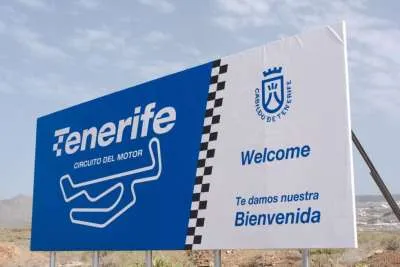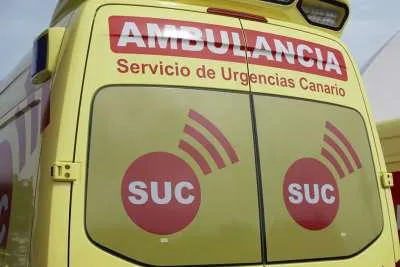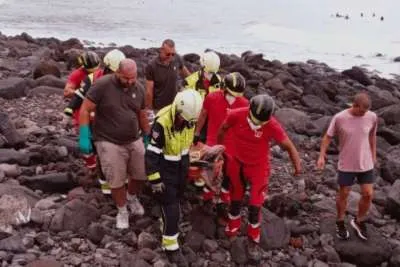How US Travellers Around the World Handle Financial Emergencies Abroad
- 19-11-2025
- Travel
- Canarian Weekly
- Photo Credit: Freepik
Even the most seasoned traveller can watch a solid budget collapse overnight. Exchange-rate swings, blocked cards, or unfamiliar hospital billing systems turn a small problem into an outsized hit. Americans abroad - students, freelancers, retirees – all face this more than most because their money often sits in dollar-only accounts while costs land in another currency.
What separates those who stay calm from those who panic is preparation: a working mix of liquidity, documents, and quick-reaction routines.
This feature maps how U.S. travellers navigate emergencies country by country. It connects actual price ranges to habits that work and ends with a compact 24-hour plan that keeps costs from snowballing.
Reality Check From U.S. Data
The Federal Reserve report on emergency expenses finds that roughly one-third of American adults would have trouble covering a $400–$500 surprise. Overseas, that same expense balloons once foreign-exchange spreads, ATM fees, and non-network medical rates pile on. A $400 domestic fix can exceed $700 within a day.
Thin margins matter more abroad. Flight delays, hotel deposits, and medical pre-authorisations often freeze funds for several days. Travellers who treat liquidity like oxygen, monitored and replenished, avoid cascading shortages later.
Emergency Cost Map by Region
Average out-of-pocket ranges for urgent needs faced by U.S. visitors:
● Clinic visit in Western Europe: $80–$250 before insurance.
● Same-day intercity rail change: $40–$120.
● Low-cost flight in Southeast Asia: $60–$180.
● Replacement eSIM or data plan: $10–$30.
Cash and cards trade places depending on the region. Northern Europe leans almost fully contactless; much of Latin America and parts of Asia still expect cash for taxis or local markets. Planning which side you’ll need means the difference between access and awkward bargaining.
Trip Prep That Reduces Risk
Solid travel finance starts before the gate. Targets and thresholds:
● Emergency buffer: at least 1.5 × the biggest daily spend, minimum $600 liquid within 24 hours.
● Card mix: two distinct networks with an ATM limit of ≥ $400 and travel alerts sent 48 hours pre-departure.
● Insurance baseline: medical coverage ≥ $100 000; evacuation ≥ $250 000.
Carry and store separately:
● Passport photo or copy and visa page.
● Insurer ID card.
● Backup debit card + PIN.
● Emergency contacts (embassy, insurer, trusted relative).
The goal isn’t paranoia; it’s making sure a single loss doesn’t freeze all access to funds.
Crisis Playbook for the First 24 Hours
When a card declines or a bill appears out of nowhere, sequence beats emotion.
1. Freeze only the compromised card; keep the spare alive.
2. Withdraw up to $200 cash for food, transport, and a roof—skip dynamic-currency conversion on receipts.
3. Message the issuer through secure app chat and request a temporary limit increase of 20% to handle hotel or hospital pre-authorizations.
Phrases worth knowing at banks or clinics:
● “Charge in local currency only.”
● “Can I pay a deposit and settle after insurance confirmation?”
● “Please confirm the network fee before processing.”
Speed, clarity, and minimal emotion shorten recovery time.
Country Playbooks Without Overlap
Each destination rewards a slightly different habit. Knowing the local “money culture” prevents dozens of small fees that add up faster than jet lag.
● Eurozone — Use SEPA transfers when possible for domestic payments; they settle within hours and beat card FX rates. Avoid weekend markups, many banks widen spreads by 1–2% after Friday close.
Gotcha: contactless caps vary by nation; keep a chip card for higher fares.
● United Kingdom — Contactless rules dominate, but the daily cap can block large hotel or train purchases. Refund rights on rail tickets apply even for delays over 15 minutes.
Gotcha: third-party ticketing apps often skip those protections.
● Japan — Cash still plays a starring role. Convenience-store ATMs (7-Eleven, Lawson) are the most reliable for foreign cards.
Gotcha: some machines shut by 9 p.m., and hotels may require paper receipts for reimbursement.
● Mexico — Stick to bank-owned ATMs inside branches, not stand-alone units. Tips are still cash-based, and many clinics expect prepayment.
Gotcha: confirm posted clinic rates before treatment, transparency is improving, not universal.
A few minutes of regional homework can save the equivalent of a hotel night’s cost in hidden fees.
Digital Tools That Unlock Options
Today’s traveller solves money gaps through screens, not teller windows.
● Multi-currency accounts and travel cards with 0–1% FX spreads keep conversions honest.
● Remittance apps now deliver to self or trusted contact in under 30 minutes.
● Virtual-card wallets let you reissue lost numbers instantly.
● Offline maps and eSIMs sustain two-factor logins when Wi-Fi dies.
Together they form a portable safety net—cheaper and faster than relying on embassy advances or wire transfers.
Additional Backup Options for Travel Emergencies
Even the best cards can stall when systems flag unusual activity. Fraud reviews or missed payments often freeze accounts for 48–72 hours, leaving travellers in limbo. During these pauses, some U.S. digital platforms provide flexible financial assistance that helps travellers handle urgent costs responsibly when standard credit access is limited.
Such services are bridges, not crutches. Review the fees, repayment dates, and borrowing caps before accepting any offer.
Guardrails that keep it safe:
● Limit any short-term advance to ≤10% of monthly take-home pay.
● Repay with the next incoming deposit.
● Avoid stacking multiple sources or rolling balances.
Responsible use buys breathing room; excess use builds the next problem.
The Final Actions That Prevent Costly Emergencies
Financial emergencies abroad are manageable if structure replaces luck. The difference between a crisis and a hiccup is a buffer, a tool stack, and a 24-hour script you already know.
Set cash and card limits this week, confirm your insurance caps, and load the contingency plan before takeoff. When the next surprise hits, you’ll spend minutes solving it instead of hours searching for options.
Other articles that may interest you...
Trending
Most Read Articles
Featured Videos
A Vision of Elvis Tenerife Promo
- 10-05-2025
TEAs 2025 Highlights
- 17-11-2025





























































